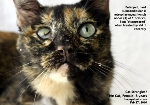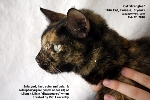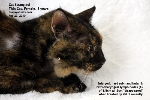A CASE OF CAT STRANGLES?
One example is the "strangles" in horses. A similar condition exists in puppies. But in cats? I have never encountered one in my 30 years of practice.
Surprisingly, an 8-year-old cat with possibly cat "strangles" was presented at my surgery yesterday. "A case of thyroid tumours," I said, based on the location of the nodular growths. They were as large as the width of a grown up woman's thumb around 2cmx2 cm. Two hard growths on one side and three on the other side of the trachea.
"The growths disappeared completely when Vet 1 gave me these medication," the Caucasian gentleman showed me two types of antibiotics and a one-ml syringe containing prednisolone. "Now the neck is swollen on both sides."
That feedback caused me to review again. This slightly dehydrated thin cat had shaved bare skin from the jugular at the neck area, right fore-limb and shoulder. The blood test was done and there were no complaints from Vet 1. Now, the sides of the neck were swollen again. Was it cat strangles?
I started palpation at the submandibular lymph nodes. There should be one in the normal animal. It was enlarged to around 2cm x 2 cm on both sides. But there were 2 on one side and 3 on the other side. I made a tentative diagnosis of "strangles" and prescribed a similar treatment as Vet 1. The condition should resolve in 7 days.
"How did the cat get the bacterial infection?" I asked the man and an older man presumed to be his father. They shook their head. I noticed a lot of black dirt on the examination table. Were they "flea dirt"? "Check for fleas," I asked the girl who wanted to study vet medicine at Edinburgh. She needed to be hands on and this was a case for being hands on. She could not find any fleas. So why was the cat spitting so much small black dirt particles from the cat's coat?
My assistant
took a speck and put it on the slide to examine. "No
need," I said as I put some the particles of dirt
onto a piece of white tissue paper and sprinkled tap
water onto the dirt particles. "There should be a
reddish tinge of blood spreading out from the dirt
onto the tissue paper if they were flea dirt."
Nothing happened. So I believed the dirt was garden
soil.
"The cat goes to the garden daily," the owner
mentioned now. The bacteria could be from the soil
contaminating the cat's paws. The cat groomed and
got infected. She was a very thin cat and therefore
was not in good health. Her immune system must be
compromised and therefore she must be housed indoors
to prevent another recurrence.
"No more garden outing for her," I advised. "Get a
cat litter"
If this was a case of cat strangles, based on the
history of recovery from the relevant treatment
by Vet 1, it was indeed a rare case. An
anti-inflammatory and antibiotic injection would
cure her. To be cautious, she had been given a
course of antibiotics. This appeared to be a rare
case of "strangles" in the cat but no biopsy of the
lymph nodes was done as I presumed that every owner
wants the least veterinary cost in times of
recession.
 BIG
VETERINARY PRACTICES IN AUSTRALIA
BIG
VETERINARY PRACTICES IN AUSTRALIA
As for the Caucasian drug salesperson, I asked
whether there are big practices as in international
legal firms with over 100 lawyers. He told me the
following are the big veterinary practices in
Australia. One of them has 40 vets and I was
surprised. It has 40 vets during the peak season in
calving or in horse breeding!
1.
http://www.woofpurnay.com.au/
# Routine veterinary consultations, vaccinations,
microchipping, etc
# 24 Hour emergency service and intensive care -
house calls available.
2.
http://www.sconevet.com.au/
With 3 facilities and 30 veterinarians Scone
Veterinary Hospital offers a complete range of
veterinary services, specialising in equine surgery,
reproduction, neonatal and post surgical intensive
care, as well as comprehensive small animal
services.
The practice has 4 veterinarians who are registered
specialists in Equine Surgery and Medicine.
3. http://wvc.com.au/
The Warrnambool Veterinary Clinic is the largest in
South Western Victoria and has focused on providing
the highest quality veterinary medicine, surgery and
advice on a diverse range of animal species, from
domestic pets, cattle, and horses to snakes and
other wildlife. In addition to the main clinic in
Warrnambool, we have branches in Port Fairy, Koroit
and Nullawarre and provide a 24 hour emergency
service throughout the district.
4.
http://www.tvg.com.au/index.htm
Timboon Veterinary Group has been providing quality
veterinary services to the dairy cattle industry of
South West Victoria since 1971. TVG is one of the
largest dairy cattle veterinary clinics in Australia
and our team of 11 vets services more than 500 dairy
farms.
If any reader has good pictures of the operating
rooms of the big practices, please e-mail to me.
 TOA
PAYOH VETS
TOA
PAYOH VETS


